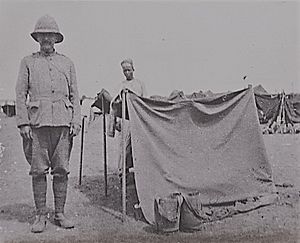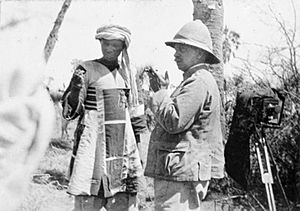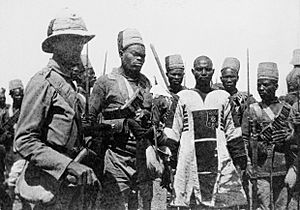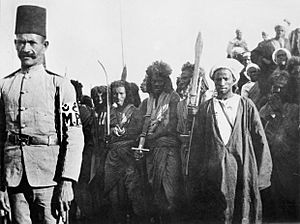Francis Gregson facts for kids
Francis Gregson was a British photographer and reporter who worked during a war in Sudan around 1898. He traveled with the Anglo-Egyptian army, led by Herbert Kitchener. Gregson is famous for an album of 232 photos called "Khartoum 1898". These pictures show the British military actions in Sudan from 1896 to 1898.
His photographs are kept at the National Army Museum in London. They are a very important record of this time. These images also helped shape how people in the 19th century saw British Imperial wars. Today, people look at these photos and other historical items from Sudan differently. They think about whether it was right for Britain to be involved in these wars. Some historians also believe that war photographers sometimes made the people who were victims of war seem less human.
Contents
Francis Gregson: A Photographer in the Sudan War
Capturing History: The "Khartoum 1898" Album
Francis Gregson worked as a reporter for the St James's Gazette newspaper. His photo album, "Khartoum 1898", contains 232 silver gelatin prints. These photos tell the story of the Anglo-Egyptian campaign against the Mahdist State in Sudan.
The story in his photos begins in Alexandria, Egypt. It then follows the soldiers as they moved south. The journey ended in Omdurman, where a major battle took place on September 2, 1898. Gregson is thought to be the photographer who captured the British troops' advance. He also documented Lord Kitchener's victory over the Mahdist forces.
What His Photos Showed
The historical photographs are stored at the National Army Museum in London. They show many pictures of the Anglo-Egyptian soldiers and their leaders. They also include photos of defeated Sudanese people. One example is Emir Mahmoud, a commander from the Battle of Atbara.
Some pictures show prisoners wearing traditional clothes and carrying weapons. These included the special jibba coats. Later, these items were shown in British museums as trophies from the war. Gregson's album also has photos of dead bodies. Some pictures even show Egyptian soldiers taking things from the bodies. One such photo is called "Looting after the Battle".
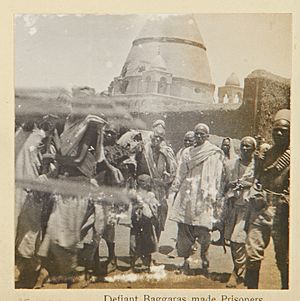
Another photo shows defeated Sudanese people standing in front of the damaged tomb of the Mahdi in Omdurman. This tomb was a very important and holy place for the people of Sudan for over ten years. Winston Churchill, who was a reporter on Kitchener's expedition, wrote about this in his book The River War (1899).
The Impact of His Work
After returning to London, Gregson put together his photo album. He had taken the pictures with his Kodak camera. Copies of his album were given to Queen Victoria. They were also given to the military leaders who had allowed him to take photos in Sudan.
See also
- Anglo-Egyptian invasion of Sudan 1896-99
- War photography


